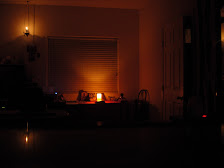 Commemorated on March 9
Commemorated on March 9Saint Heraclius was one of the Holy Forty Martyrs of Sebaste who refused to sacrifice to pagan gods, and suffered for Christ around 320. Licinius, the co-ruler of Saint Constantine the Great, was a pagan, and he decided to stamp out Christianity in his part of the Empire. As Licinius prepared his army to fight against Constantine, he feared mutiny and so he decided to remove all Christians from his army.
A company of forty Cappadocians, brave soldiers who had distinguished themselves in many battles, was stationed in the Armenian city of Sebaste under the command of the pagan Agricola. When these soldiers refused to offer sacrifice to the pagan gods, Agricola locked them up in prison.
It was winter, and there was a severe frost. The holy soldiers were lined up and thrown into a lake near the city, and a guard was stationed on the shore to prevent them from coming out of the water. In order to break the will of the martyrs, a warm bath house was set up on the shore. One of the soldiers came out of the water to offer sacrifice, and the guard Aglaius took his place.
In the morning, the torturers were surprised to see that the martyrs were still alive, and their guard Aglaius was glorifying Christ together with them. They led the soldiers out of the water and broke their legs. During this horrible execution the mother of the youngest of the soldiers, Meliton, pleaded with her son not to persevere until death.
They put the bodies of the martyrs on a cart and committed them to fire. Young Meliton was still breathing, and they left him to lay on the ground. His mother then picked up her son, and on her own shoulders she carried him behind the cart. When Meliton drew his last breath, his mother put him on the cart with the bodies of his fellow sufferers. The bodies of the saints were tossed in the fire, and their charred bones were thrown into the water, so that Christians would not gather them up.
Three days later the martyrs appeared in a dream to Saint Peter, Bishop of Sebaste, and commanded him to bury their remains. The bishop together with several clergy gathered up the relics of the glorious martyrs by night and buried them with honor.
There is a pious custom of baking “skylarks” (pastries shaped like skylarks) on this day, because people believed that birds sing at this time to announce the arrival of spring. Forty “skylarks” are prepared in honor of the Forty Martyrs.
TROPARION - TONE 1
Together let us honor the holy company united by faith, / Those noble warriors of the Master of all. / They were divinely enlisted for Christ, / And passed through fire and water. / Then they entered into refreshment praying for those who cry: / Glory to him who has strengthened you! / Glory to him who has crowned you! / Glory to him who has made you wonderful, O holy Forty Martyrs!
KONTAKION - TONE 6
You abandoned all earthly armies, / cleaving to the heavenly Master, O Forty Martyrs of the Lord. / Having passed through fire and water, O Blessed Ones, / you have fittingly received heavenly glory and many crowns.
SOURCE:
SAINT OR FEAST POSTED THIS DATE 2017(with 2016's link here also and further: 2015,2014 2013, 2012, 2011, 2010, 2009, and even 2008!):









.jpg)






2 comments:
In Romania we have a special dish we eat on March 9 called "mucenici" ("martyrs"). In Wallachia (south) we make a sweet soup with sugar, cinnamon, walnuts and 8-shaped pasta (mucenici). In Moldavia (east)they make small 8-shaped brioche breads dunked in syrup and sprinkled with ground walnuts. They also mention drinking 40 glasses of wine, but I'm sure that's a later addition :).
Anna,
All those sound wonderful.
Post a Comment